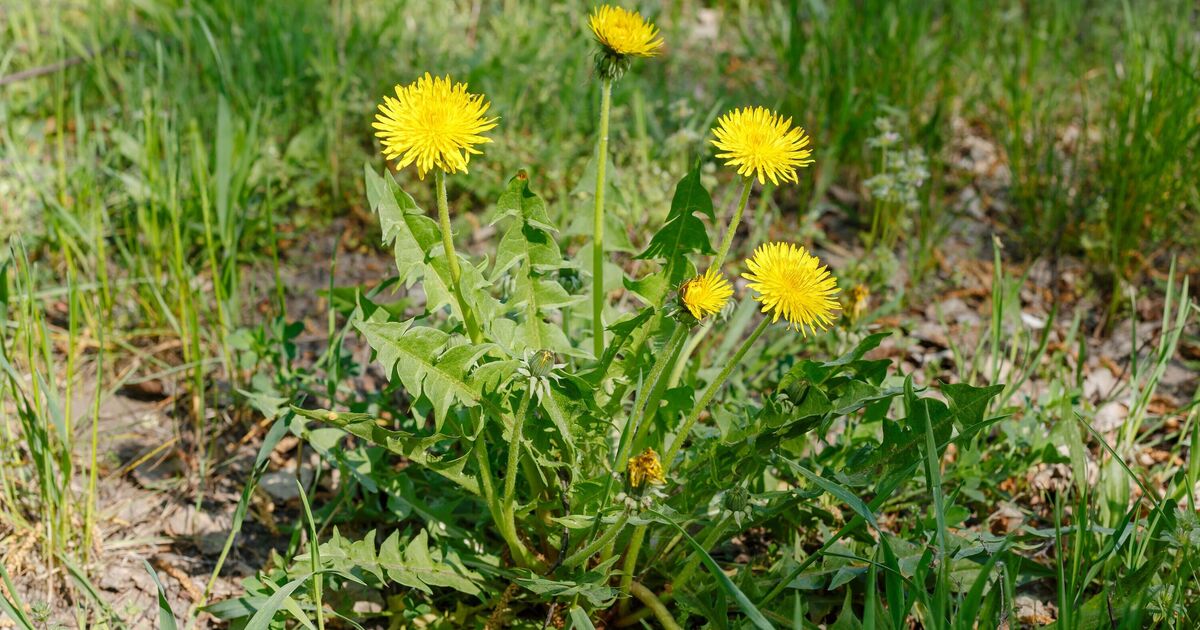Removing lawn weeds as they appear is an effective way of keeping them under control before the whole garden is swarmed. Common weeds, including daisies, buttercups, and dandelions, can block the grass from receiving essential nutrients and light, killing the grass.
This makes it crucial to get rid of them as soon as possible, and there are some easy ways to do so. If gardeners are not even sure whether they have lawn weeds or not, the Royal Horticultural Society (RHS) has shared three ways they can be identified.
This includes areas of the grass looking patchy or simply areas which are of a different colour or texture to the rest of the lawn.
The experts said: “Flowers may also appear in the grass. This can occur even in a closely mown lawn, but it often appears when the grass is allowed to grow longer.
“Patches may also remain green during a drought. Lawn weeds may perform better or worse than the lawn grasses, staying green or turning brown.” The pros recommended trying non-chemical options, which gardeners should try first to tackle lawn weeds.
1. Feeding, aerating, and scarifying
According to the experts, feeding, aerating, and scarifying the lawn will “encourage” it to be more vigorous, making it difficult for the weeds to compete.
Gardeners should choose a specific fertiliser based on the time of the year but the experts recommended feeding the lawn in spring, while it is green and active growing.
2. Remove by hand
The “simplest” method to remove lawn weeds is to do so by hand, using a hand fork. To remove them, slide the tool under the weed and cut it off at the root.
Then, pull the weed out and discard it away from the area where it was growing. If gardeners leave the weeds on or near the lawn, they could discharge their seeds, causing them to grow again.
3. Avoid close mowing
The RHS experts said: “Avoid close mowing, particularly with parsley piert and pearlwort, as this can weaken the grass and allow the weeds in.”
Mowing too close can also cause moss invasion, which may result in disease and premature death. As a general rule, most grass is best kept up to four centimetres tall.
Gardeners should leave it a little longer in heavily used areas, and in shaded areas, up to eight centimetres.

